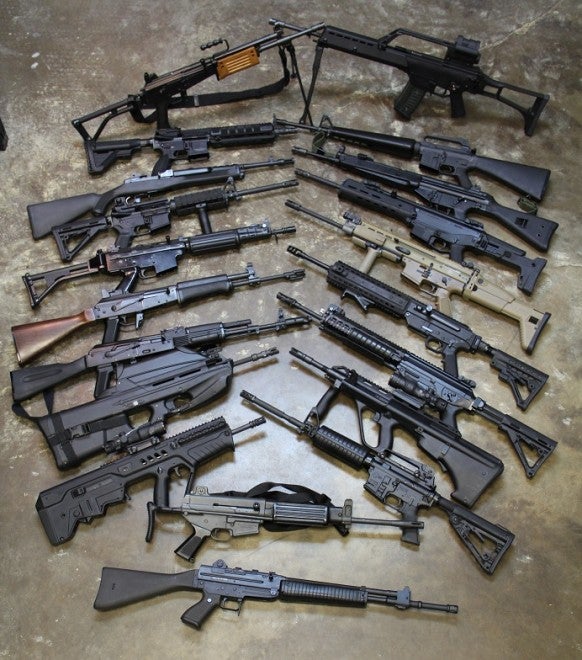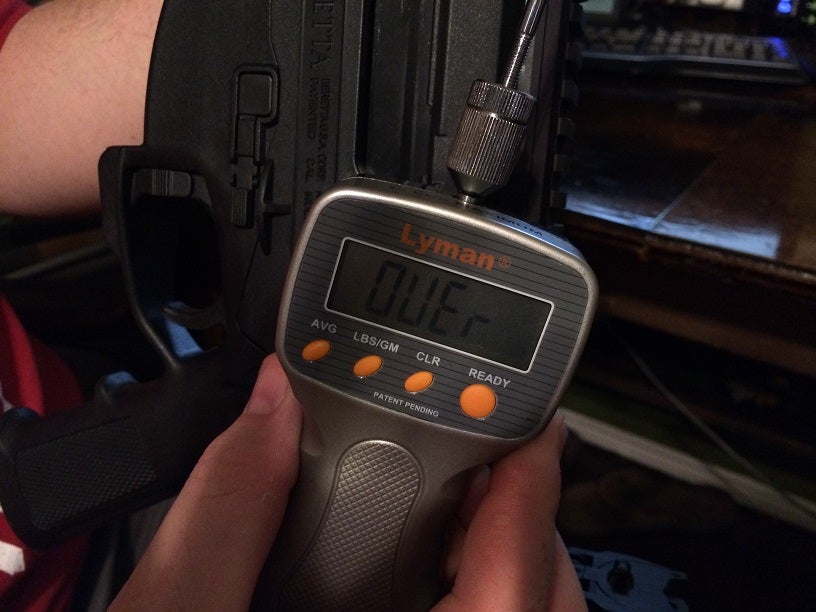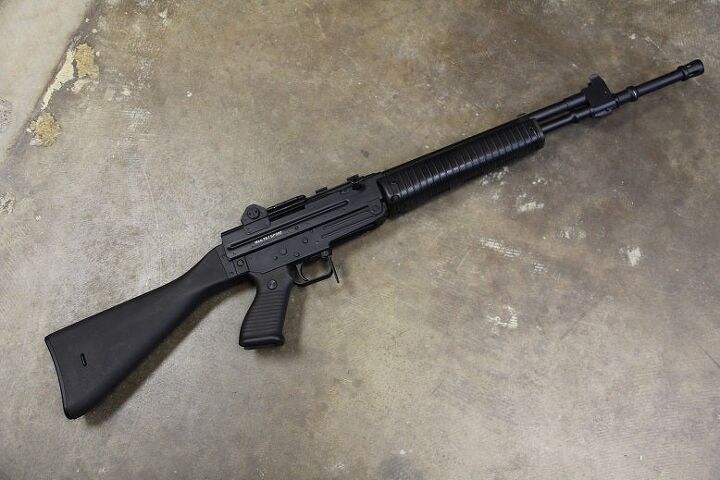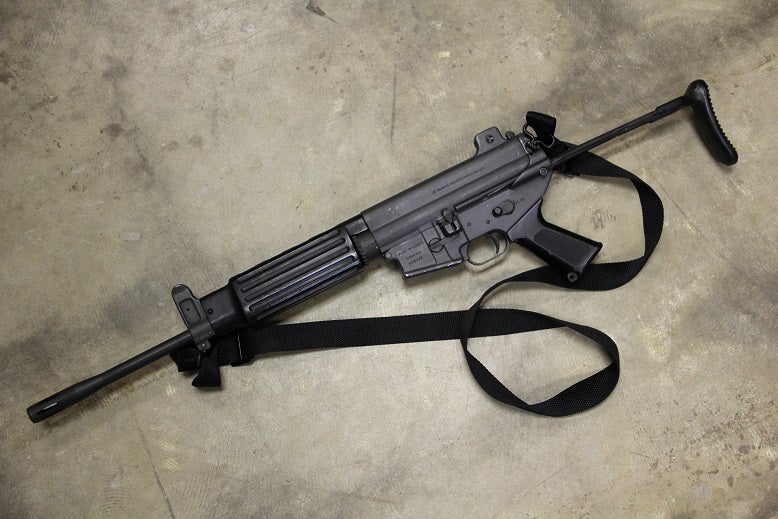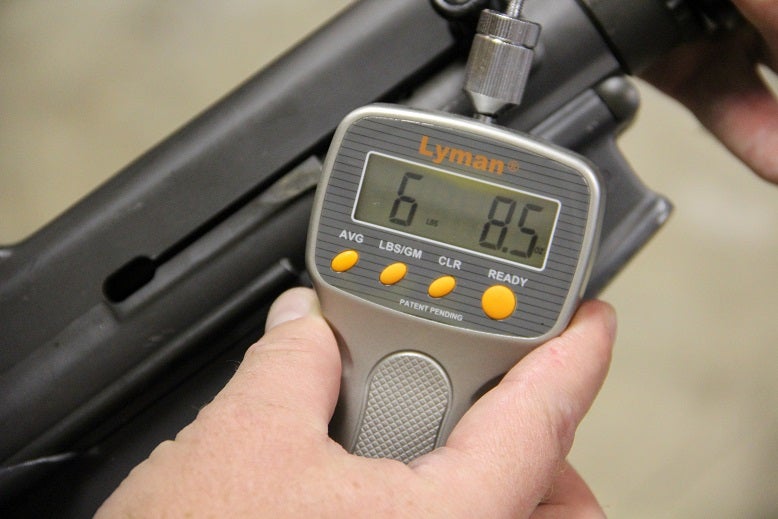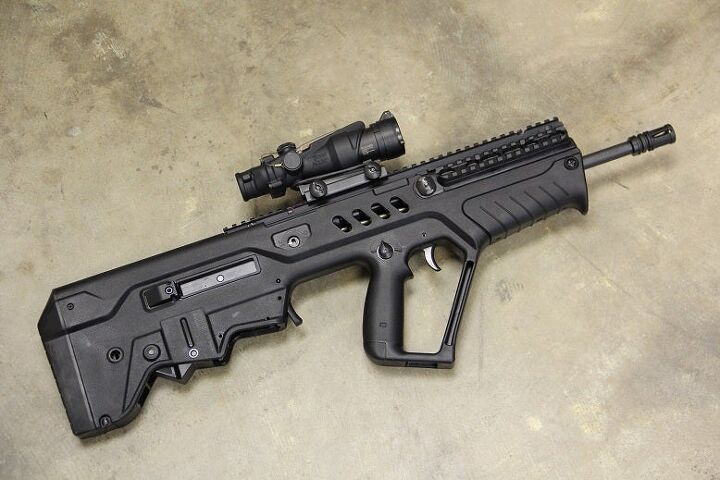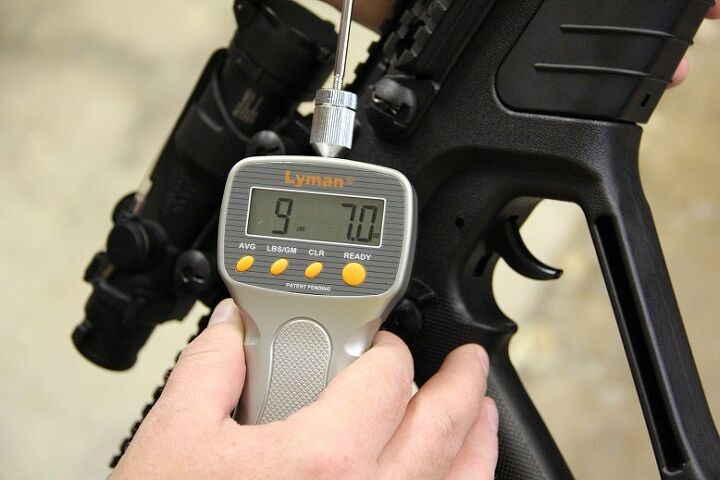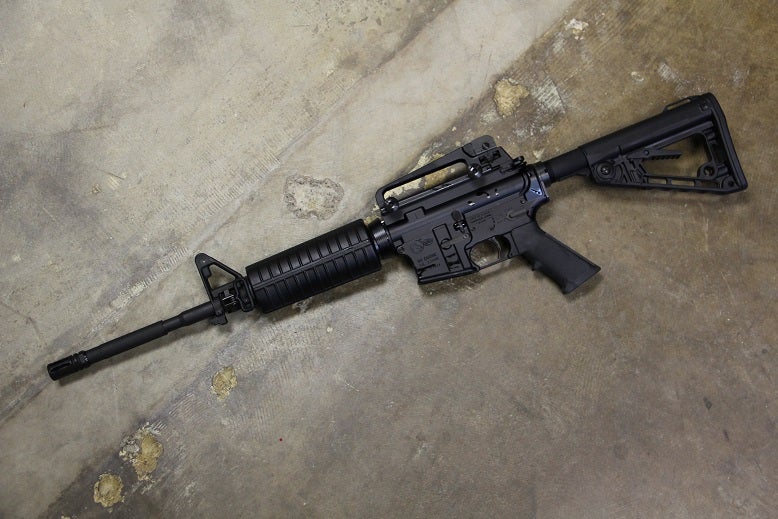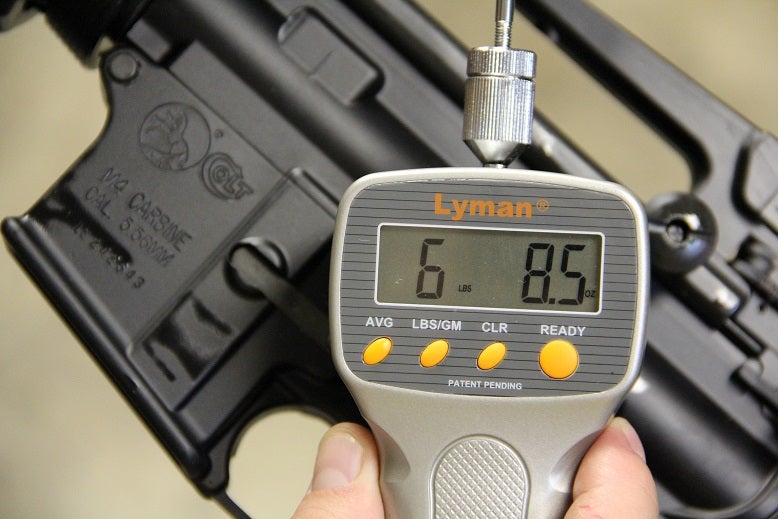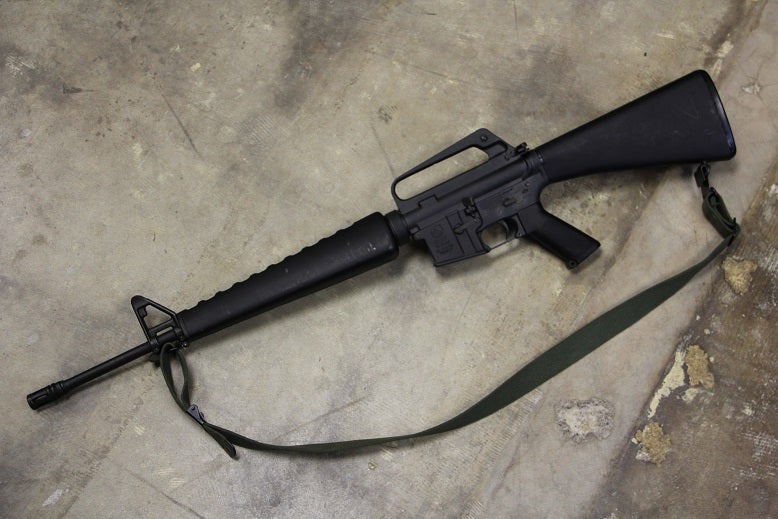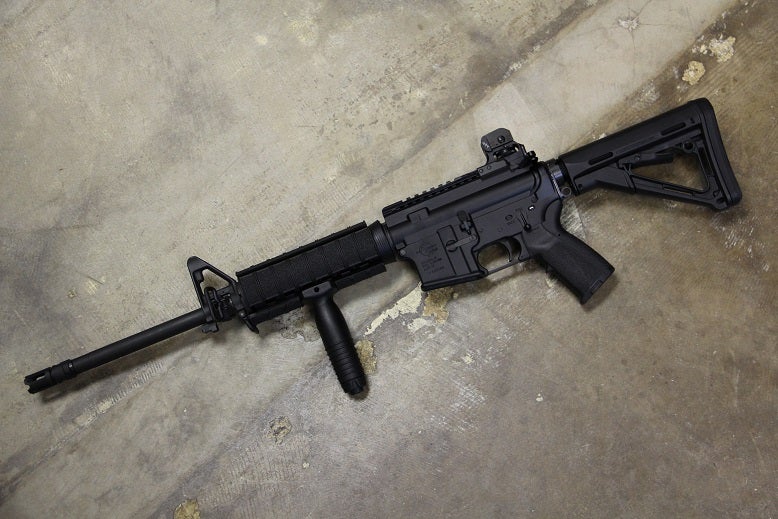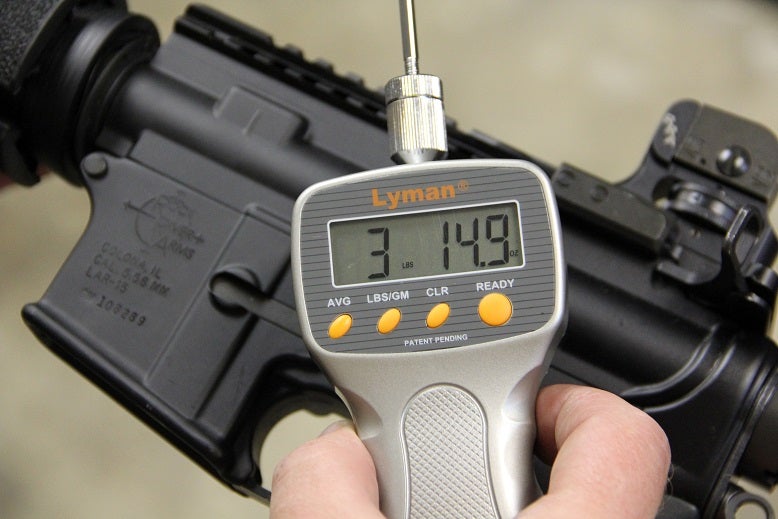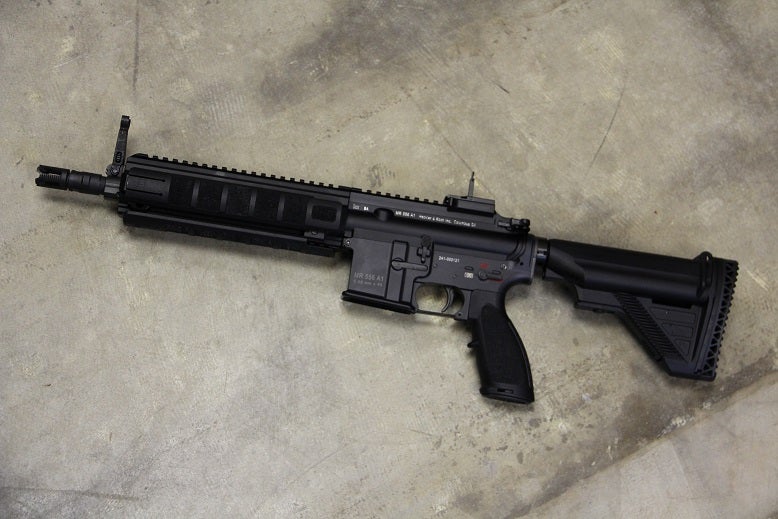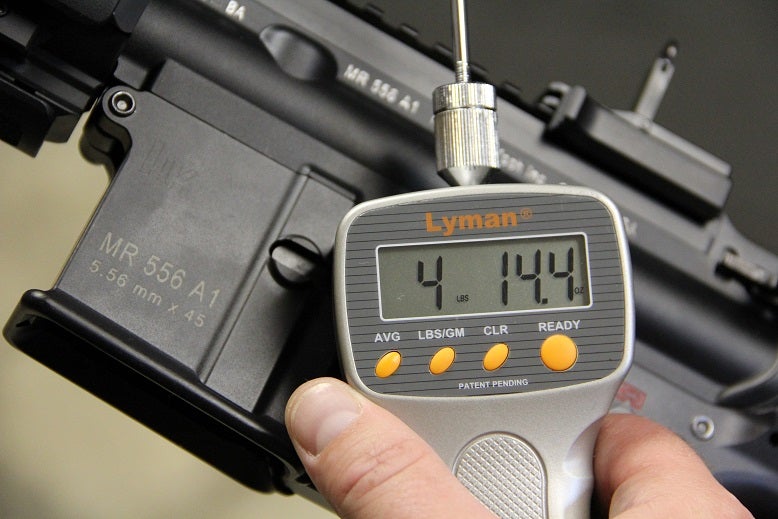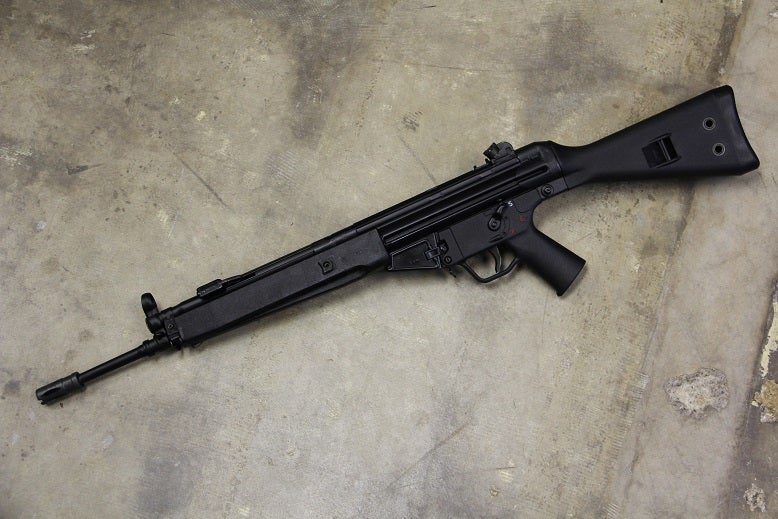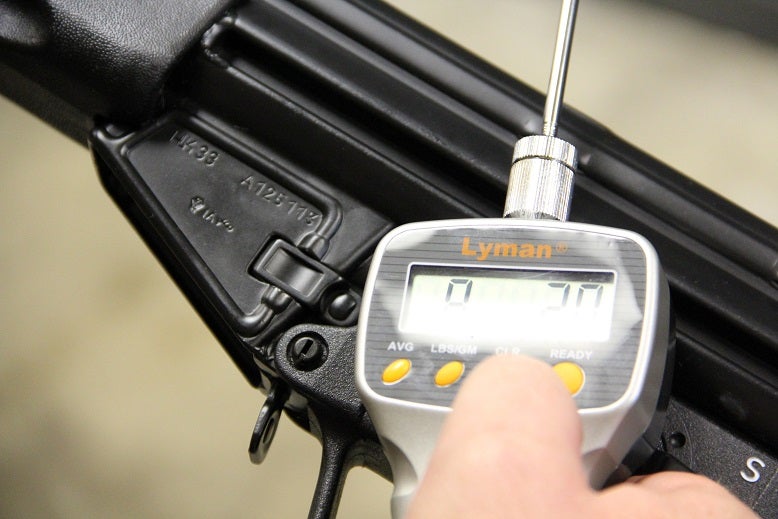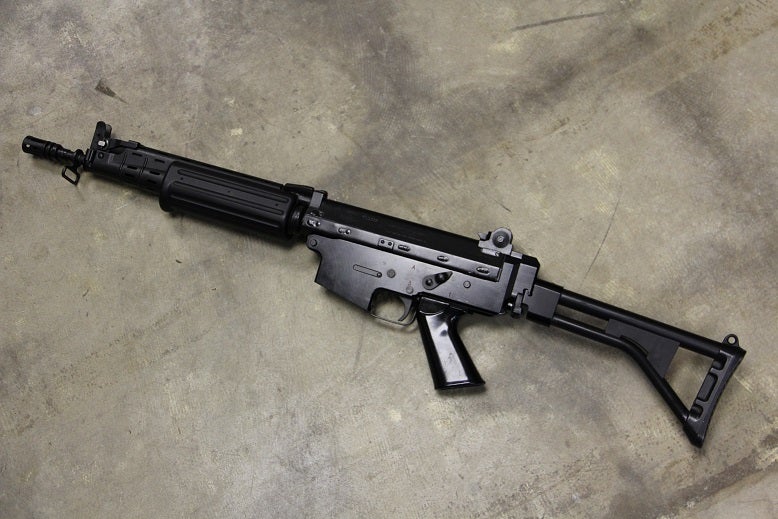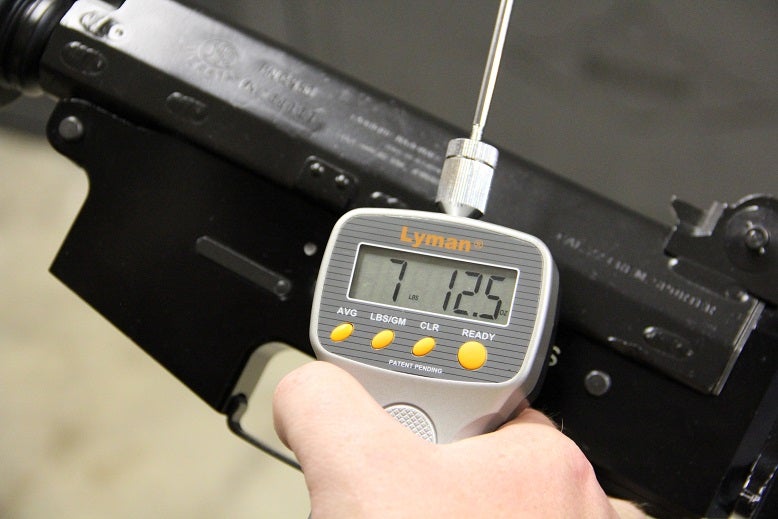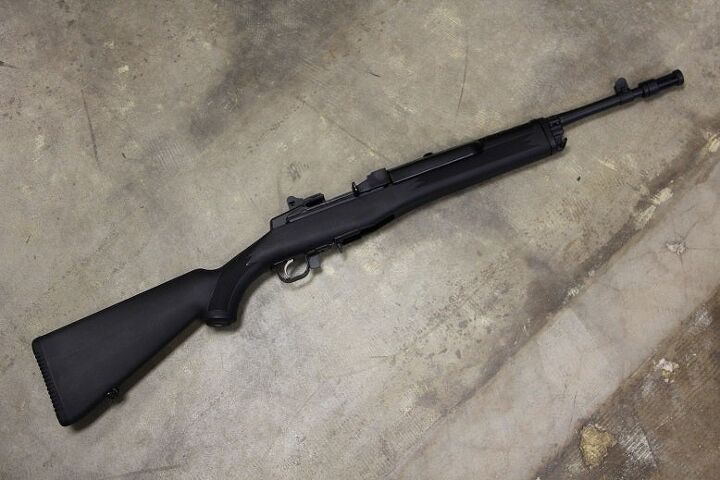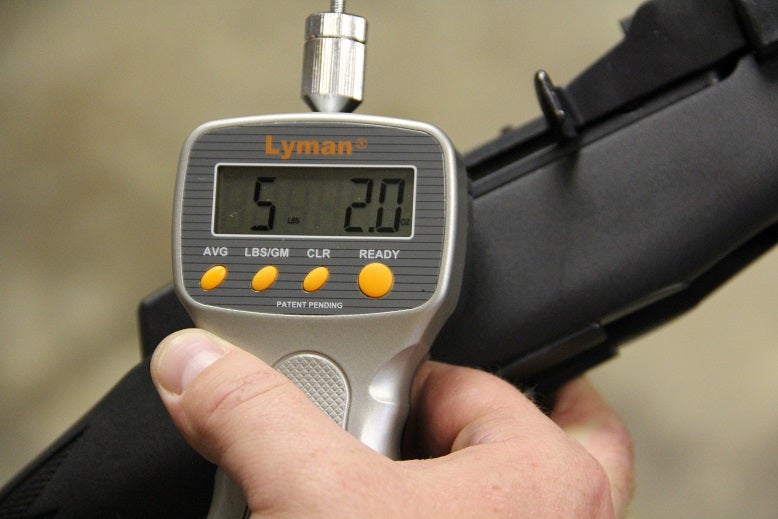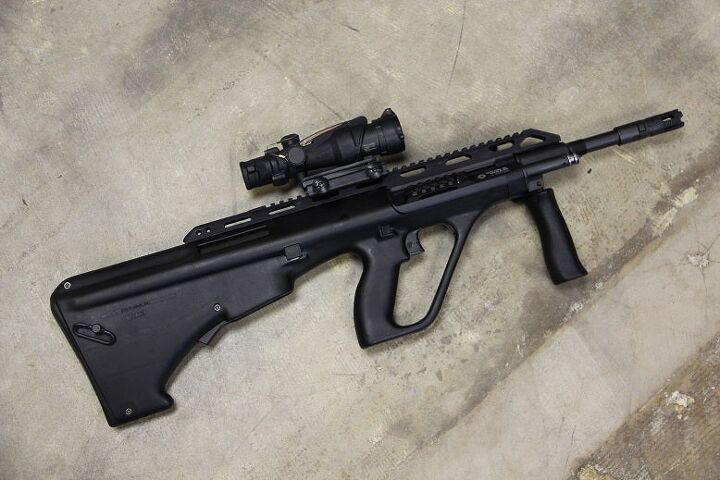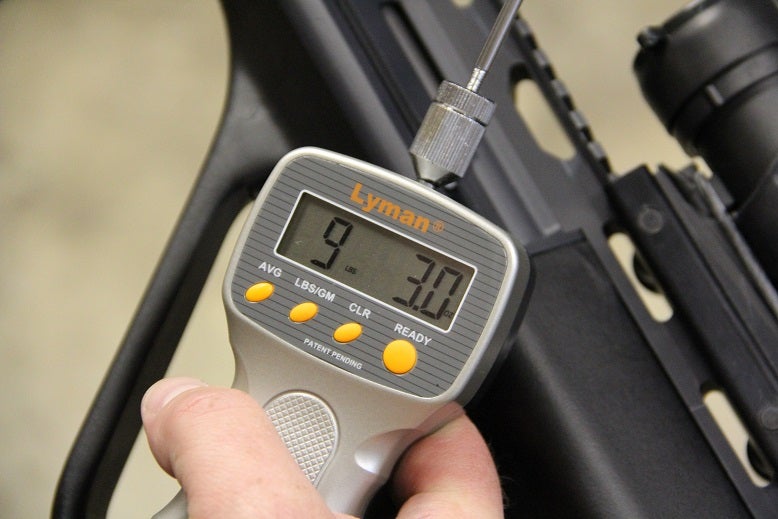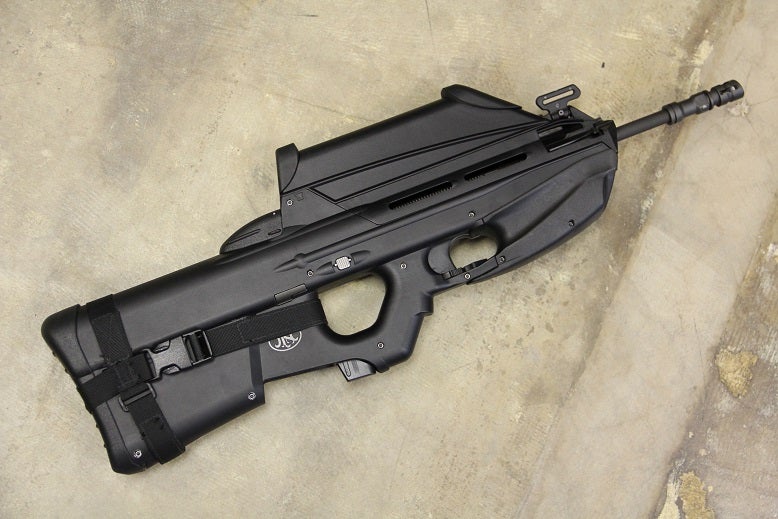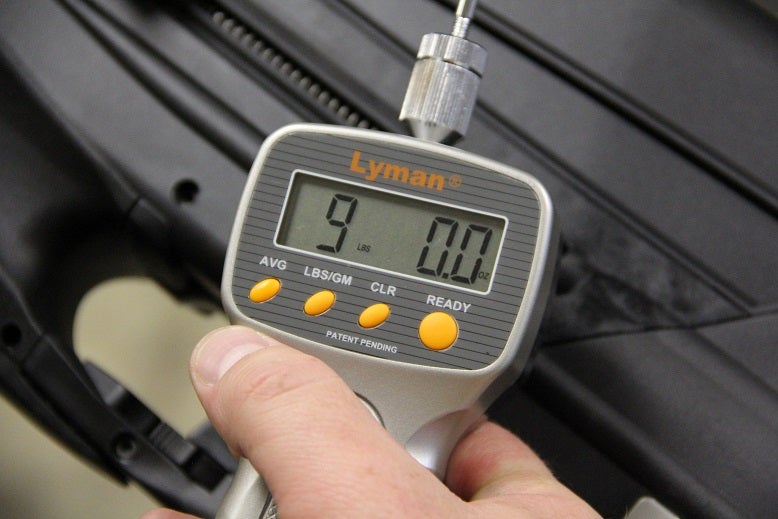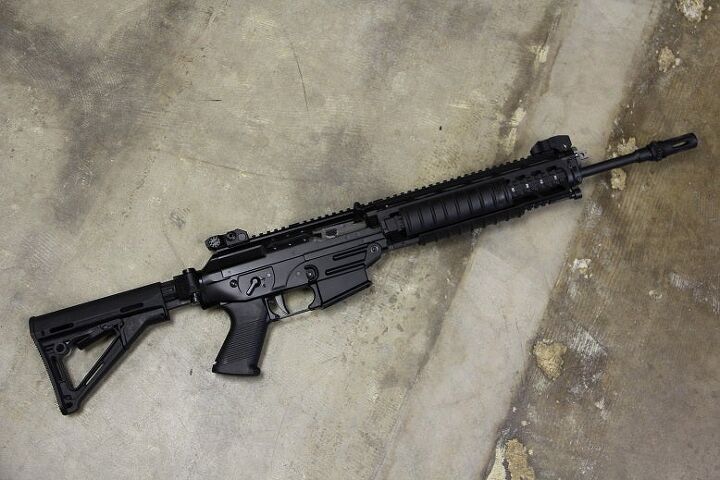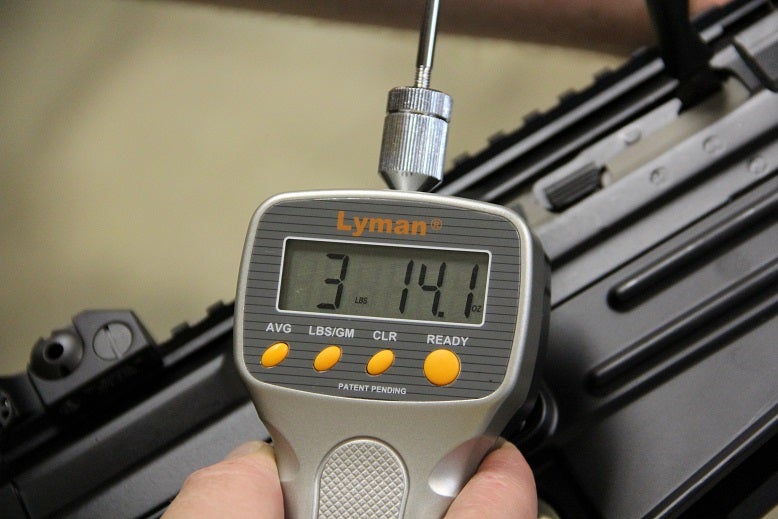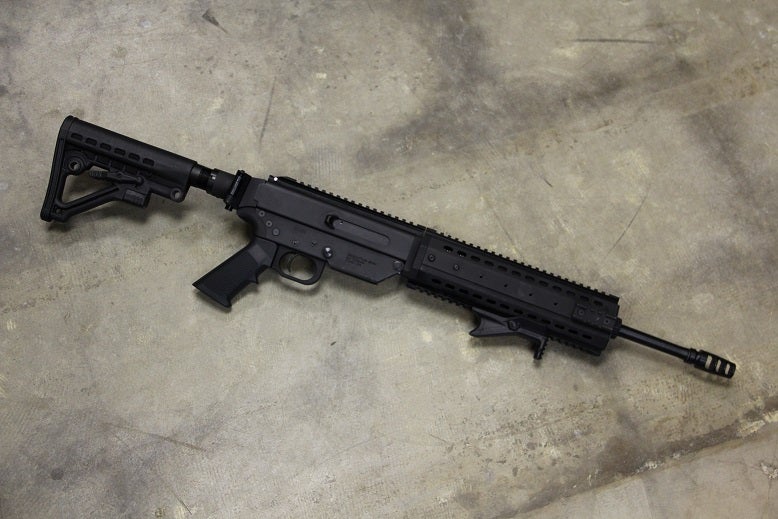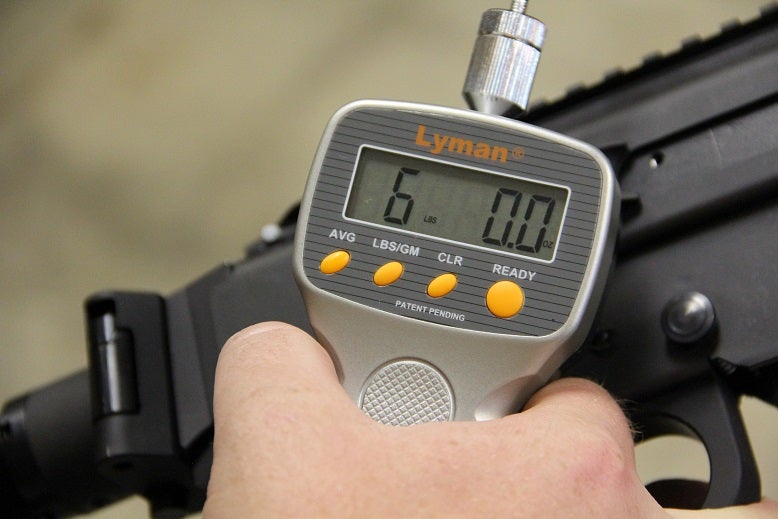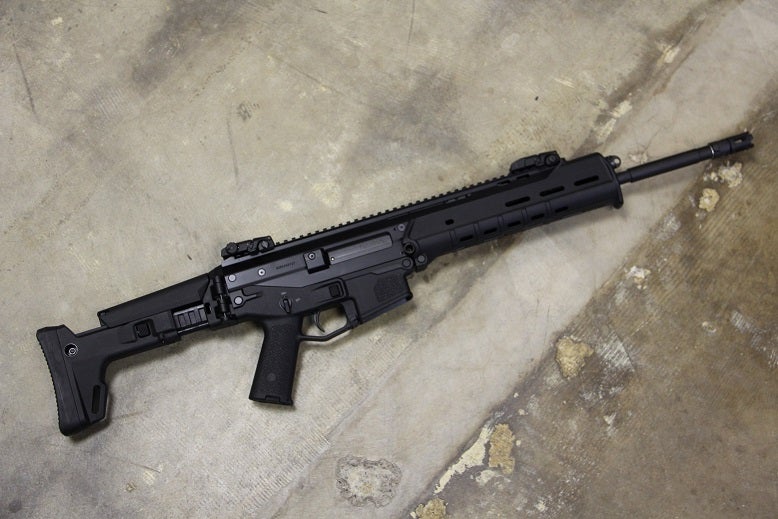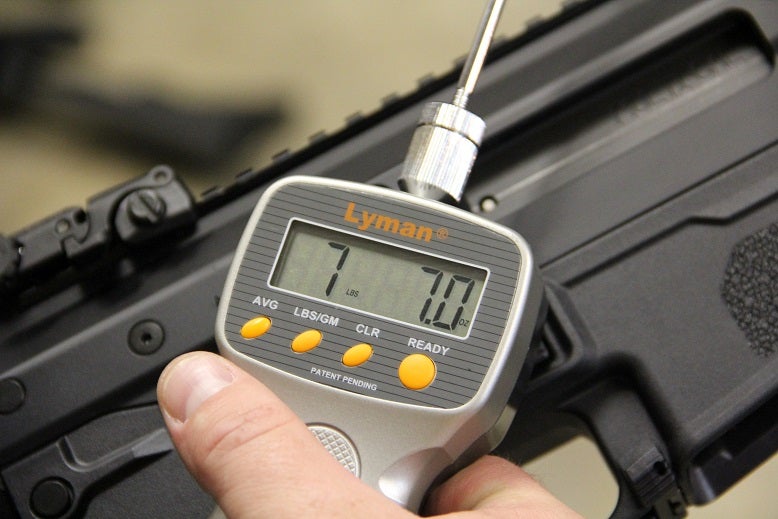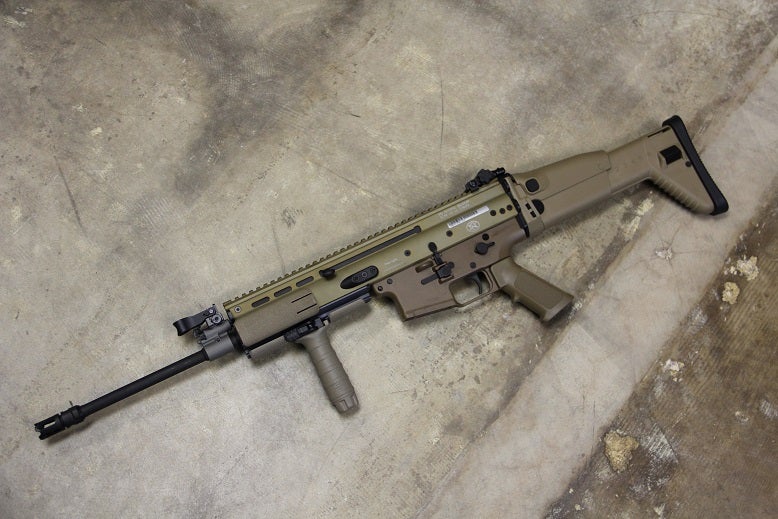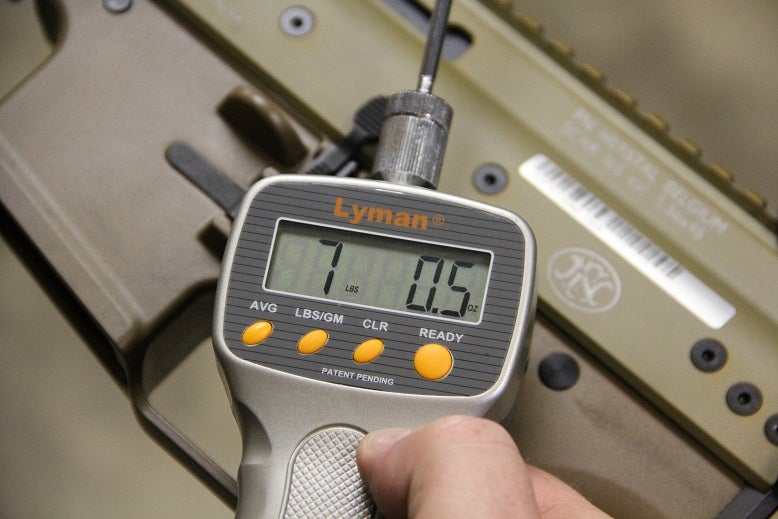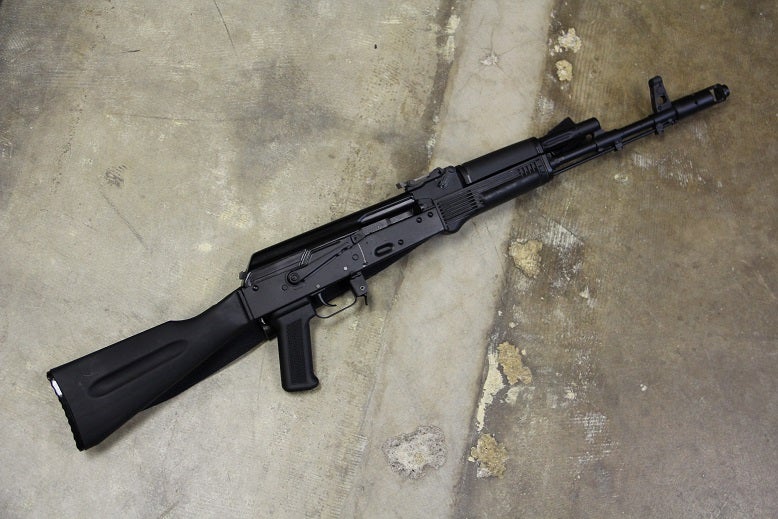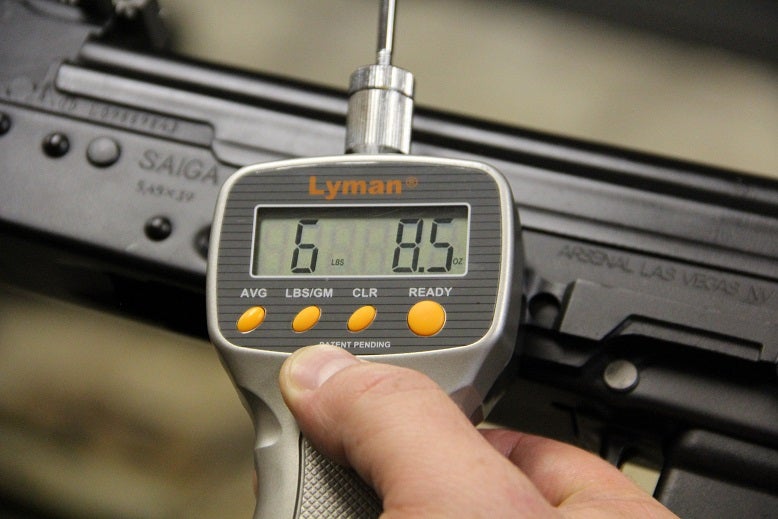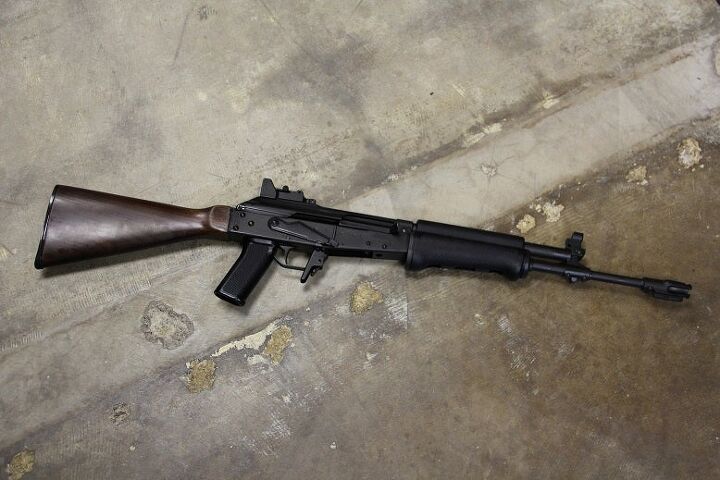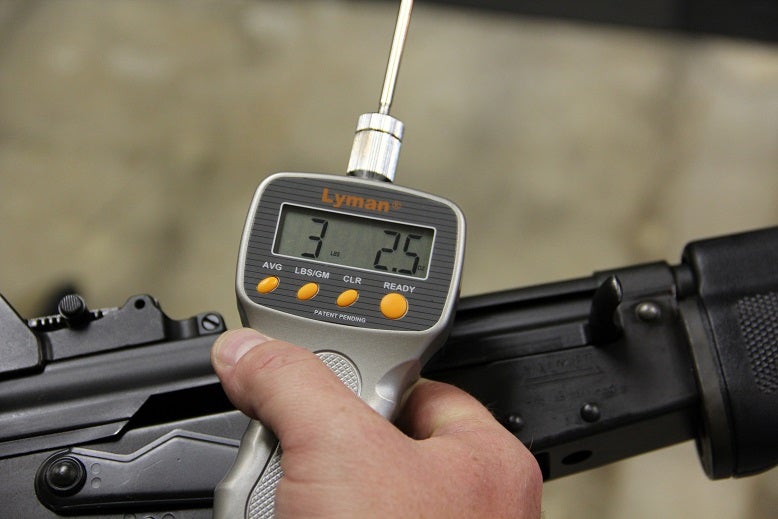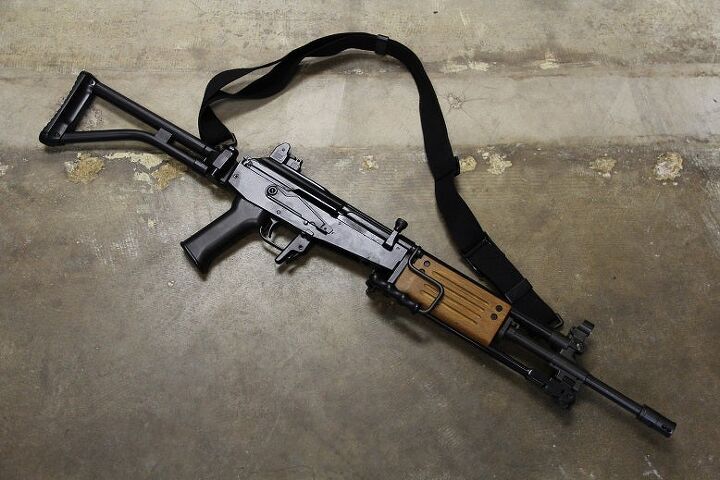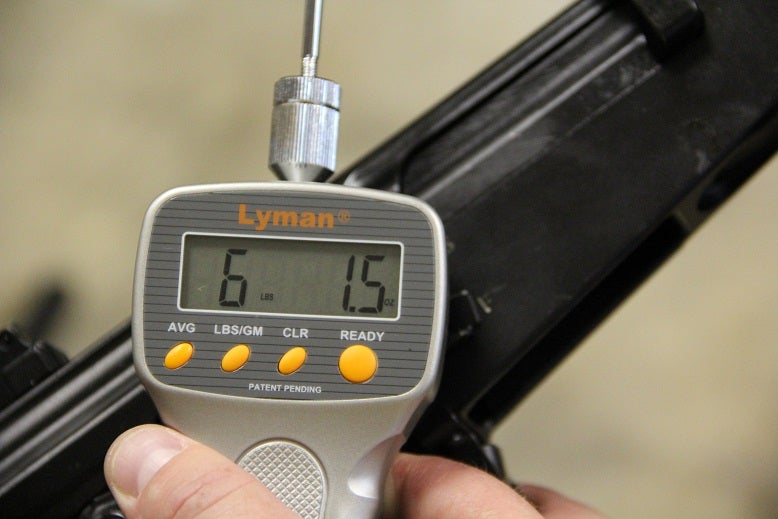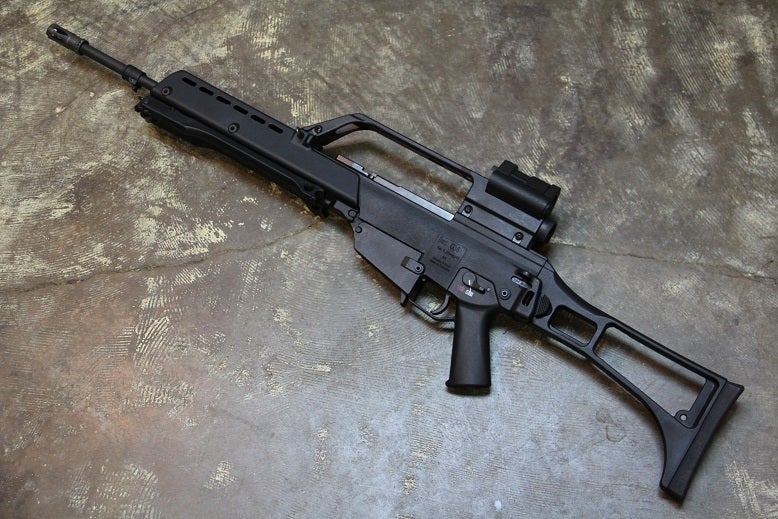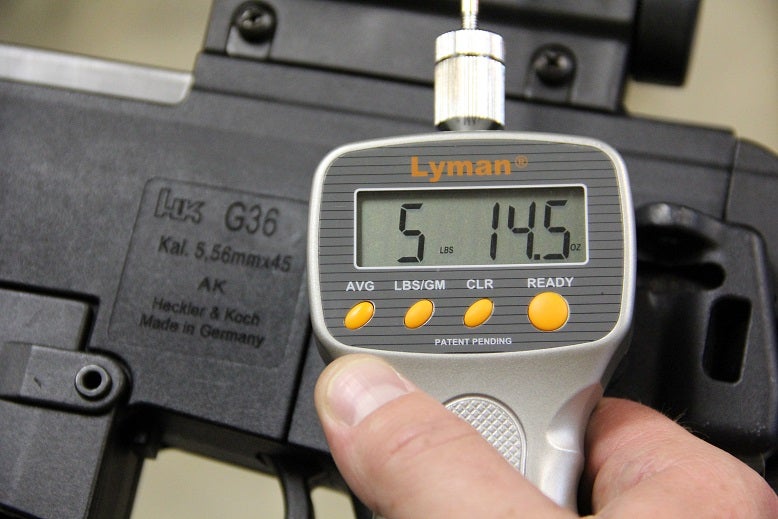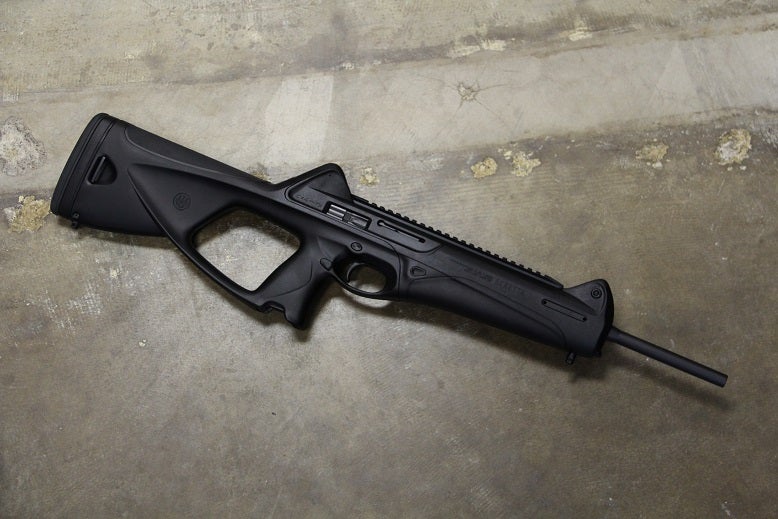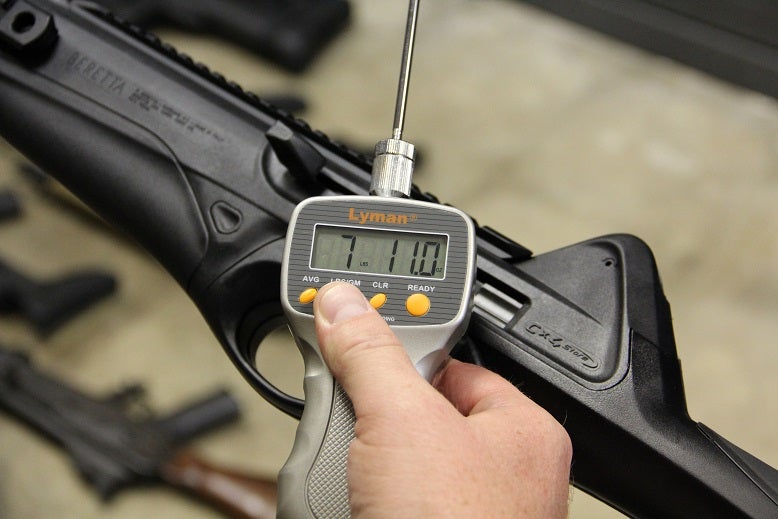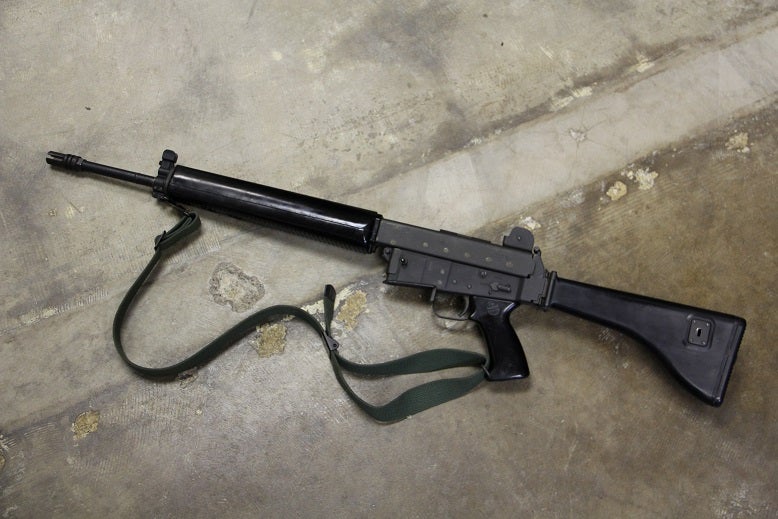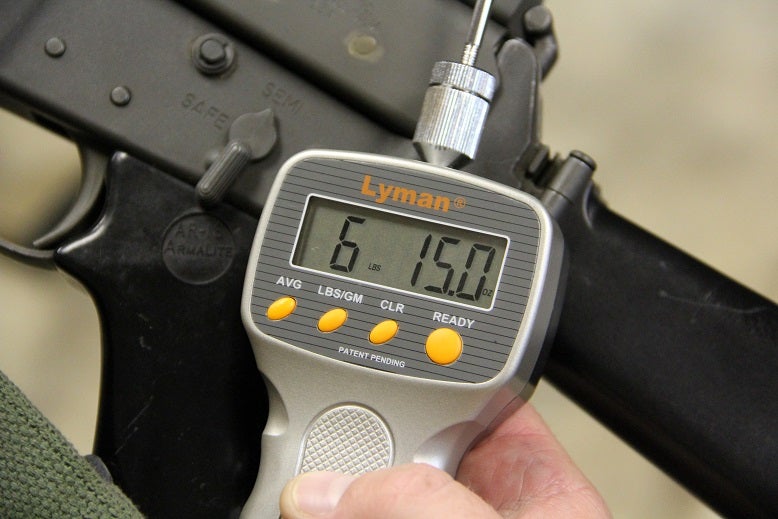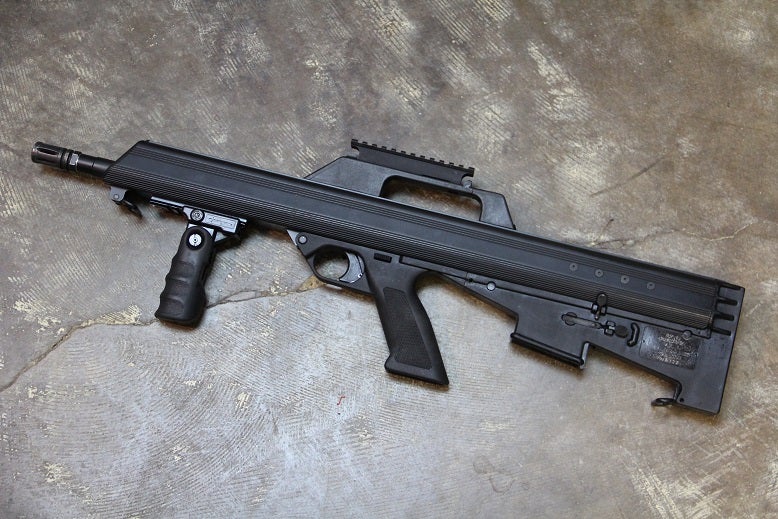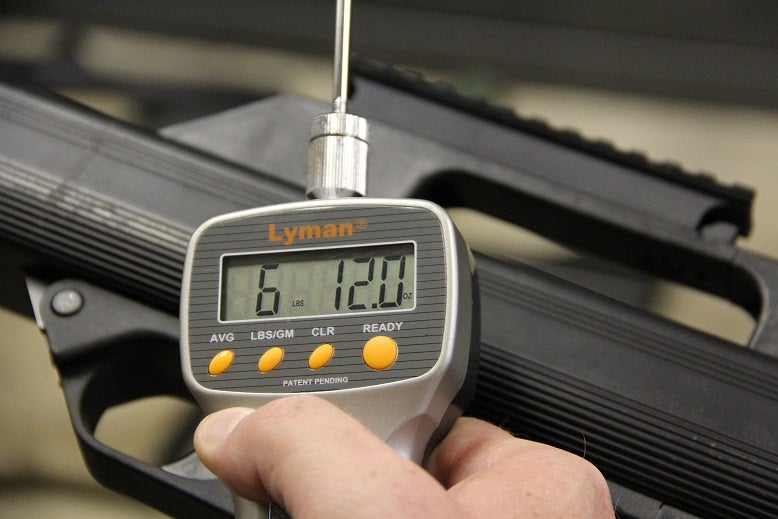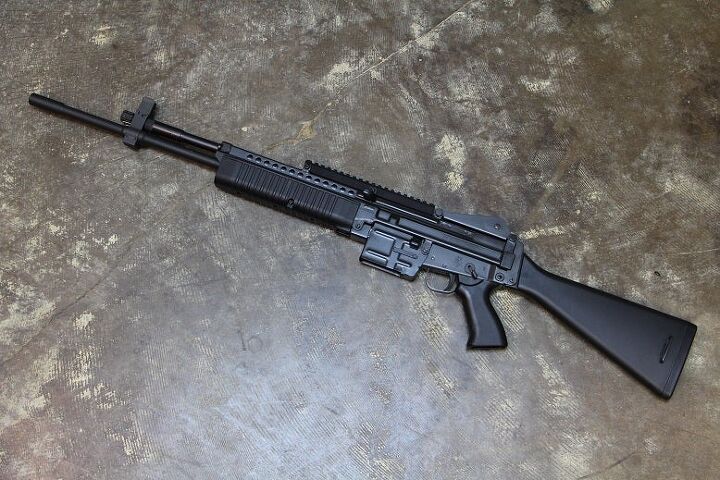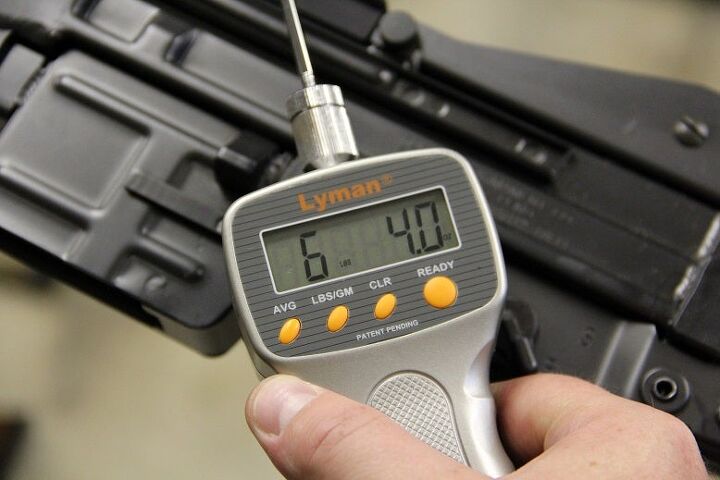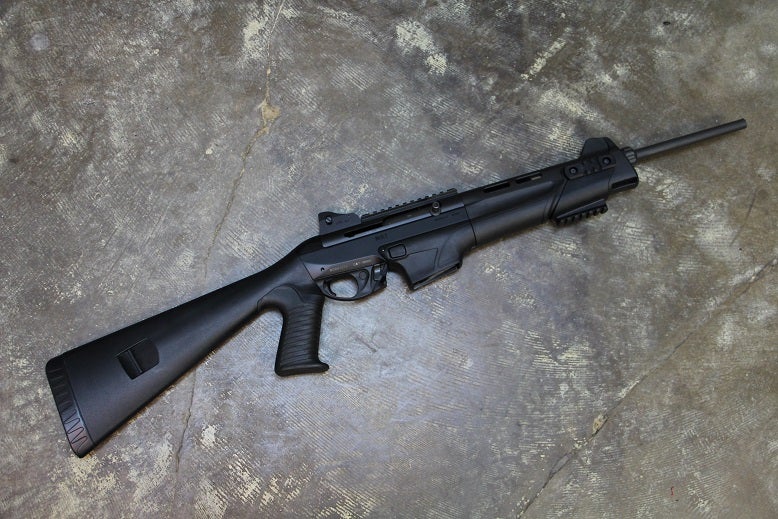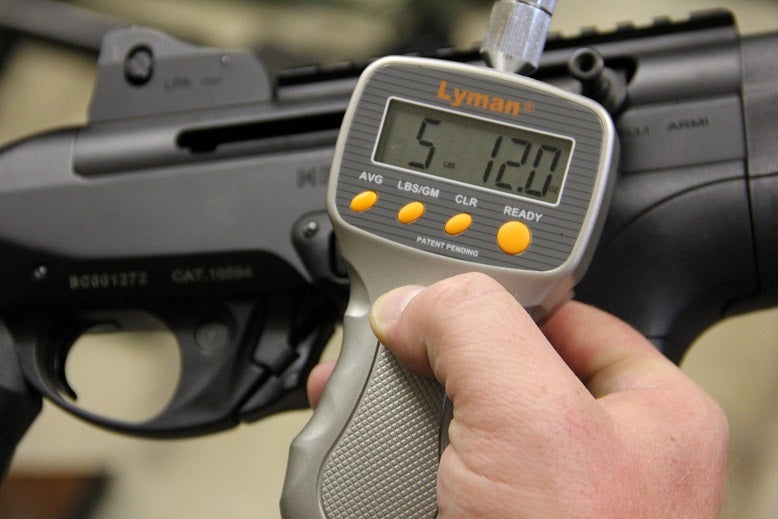I recently posted an article evaluating the Beretta ARX-100 rifle, and the feature that I feel was most detrimental to the shooting experience was the trigger, which actually maxed out a trigger pull gauge. My friend CJ is serious about distance shooting, reloading, and is quite handy when it comes to trigger work and as such he has a gauge.
On measuring the pull of the ARX-100, most attempts resulted in a max:
However we did manage to get it to read once after several times at 11 pounds, 8 ounces:
After this experience, I thought it might be reasonable and prudent to put many other rifles (including two Beretta products) to the test that I feel are comparable in at least one category to the ARX-100.
For testing, I dug pretty deep into the safe. I will also note that none of these have had any trigger work on them. All have completely stock triggers:
A set of testing parameters were established:
- The same gauge used in the review would be used on all rifles
- Three attempts would be made on all rifles
- The median of the three tests would be collected as data
The rifles were placed with their stocks on a flat surface and all tested by my business partner Patrick while I photographed the rifles (he has no vested interest in any rifle performing better than any other).
Anyways, on with some results.
I felt starting with the previous Italian service rifle was appropriate; the tried and true Beretta AR70:
Which did much better than the ARX-100’s 11 pounds, 8 ounces:
Next up was a Daewoo K1A1, Korea’s AR15.
Then the Israeli Tavor:
A new, unfired Colt M4:
A select fire M16A1:
A Rock River Arms AR15 with their 2-stage trigger:
An HK MR556A1:
A select-fire HK33:
An FN FNC:
A Ruger Mini 14:
New AUG A3:
FS2000:
Sig 556:
Masterpiece Arms MPAR:
Bushmaster ACR:
FN SCAR 16s:
Arsenal AK74 (SGL-31):
Valmet M76:
Israeli Galil 392:
H&K G36 (SL8 trigger group):
Beretta CX4 Storm:
Armalite AR180:
Bushmaster M17s:
Robinson M96:
Benelli MR1:
So with that we have a final pool of all data, arranged from the gun with the lightest trigger pull to the heaviest:
| Gun | Pounds, Ounces | Ounces | Pounds |
| Valmet M76 | 3, 2.5 | 50.5 | 3.15625 |
| Sig 556 | 3, 14.1 | 62.1 | 3.88125 |
| Rock River | 3, 14.9 | 62.9 | 3.93125 |
| HK MR556 | 4, 14.4 | 78.4 | 4.9 |
| Mini 14 | 5, 2 | 82 | 5.125 |
| Benelli MR1 | 5, 12 | 92 | 5.75 |
| G36/SL8 | 5, 14.5 | 94.5 | 5.90625 |
| MPAR | 6, 0 | 96 | 6 |
| Galil 392 | 6, 1.5 | 97.5 | 6.09375 |
| Robinson M96 | 6, 4 | 100 | 6.25 |
| Daewoo | 6, 8.5 | 104.5 | 6.53125 |
| M4 Carbine | 6, 8.5 | 104.5 | 6.53125 |
| AK74 | 6, 8.5 | 104.5 | 6.53125 |
| Bushmaster M17s | 6, 12 | 108 | 6.75 |
| M16A1 | 6, 14 | 110 | 6.875 |
| AR180 | 6, 15 | 111 | 6.9375 |
| SCAR | 7, 0.5 | 112.5 | 7.03125 |
| AR70 | 7, 2 | 114 | 7.125 |
| ACR | 7, 7 | 119 | 7.4375 |
| CX4 Storm | 7, 11 | 123 | 7.6875 |
| FNC | 7, 12.5 | 124.5 | 7.78125 |
| HK33 | 8, 2 | 130 | 8.125 |
| FS2000 | 9, 0 | 144 | 9 |
| AUG | 9, 3 | 147 | 9.1875 |
| Tavor | 9, 7 | 151 | 9.4375 |
And this fancy graph should help as well:
This experiment was eye opening to me, and I hope that this data is pertinent to you choosing your next rifle!
 Your Privacy Choices
Your Privacy Choices
